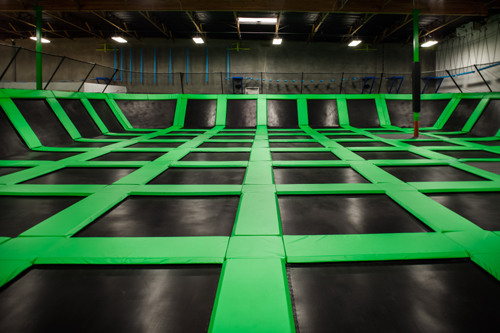- Fly safe and follow below rules on trampoline park
- Please be Friendly to Others in the Indoor Trampoline Park
- Trampoline Parks Inspire Children's Enthusiasm for Sports
- Indoor Trampoline Park Keeps Children Away From Anger
- The Top Aim of a Trampoline Park Is to Make Children Healthy
- Trampoline Park Prevents Kid from Getting Over-weighted
- Trampoline Park Can Help People To Prevent Disease
- Trampoline Park Can Prevent or Reduce the Symptoms of Obesity
- Children Like Trampoline Park for Its Exciting Activities
Watching a child bounce around on a trampoline park almost always brings a smile to one’s face, particularly when you are aware of the child’s special needs.
Children with special needs require a lot more care than other children. Regular growth can be hampered and the simplicity of growing up becomes more complex. Regular exercise has to be ensured so that they can strengthen their bones and limbs, tone their muscles and build up their stamina. Because they are normally introverted and reclusive, it is important to help them communicate. Making them independent and self confident becomes a key factor in their upbringing. By using a trampoline, they can learn all this and what's more important is that they can discover how to have fun whilst doing so.
Trampoline gym are becoming rapidly accepted as an educational instrument in special education curriculum. But because of the chances of unpredictability, it is very essential to consider additional safety features for a trampoline used by special needs children. It is also very important for these children to be constantly supervised when using the trampoline.
Children with special needs tend to be distracted and have short attention spans. Therefore, their carers and parents often require creative and innovative methods to help them with teaching the children basic skills. Using a trampoline can not only be an exercise to keep them physically healthy, but also is an effective way to lessen their sometimes challenging behavior.
Let us take a look at some of the benefits that a special needs child can get from bouncing on a trampoline:
1. Sensory Skills
Special needs children have the tendency to feel overwhelmed and anxious rather quickly - which often leads to added stress and consequent challenging behavior. Trampolines can help to normalize energy and relieve them of their anxiety in a very positive manner.
2. Motor Skills
It is very important for children with special needs to develop their muscles as well as strengthen their bones and joints. Rebounding on a trampoline helps them to do just this. It also helps to stimulate their senses which in turn lead to a better interaction with their surroundings. . Jumping on a trampoline encourage regular fitness and helps them to enhance their balance. Healthy children are more inclined to feel confident about their body and are more likely to play outdoors.
3. Engagement
Conventional teaching methods are very difficult for many special needs children to adapt themselves to. They can learn lot more effectively when they connect their intellectual development with body movements. Various games can be used to teach a child different things while bouncing around on the trampoline. Numbers, colors, directions, simple commands etc can be taught to a child by calling them out and getting the child to respond.
4. Social Skills
It is never easy for children with special needs to interact with others. They are normally considered to be living inside their cocoon. Trampolines help them let go of their inhibitions and encourages them to relate to their supervisor. Just counting the number of jumps or clapping and singing to the bouncing rhythm can make the bonding experience very rewarding.
5. Concentration
Exercising on a trampoline can be a very good way to increase the concentration levels of a child with special needs. Bouncing can help to increase the amount of oxygen to the brain, thus improving circulation. This makes the child feel refreshed, energized, alert and more focused on the task to be completed.
6. Physical Development
A simple act of jumping on the trampoline not only helps to improve the intake of oxygen which is good for the circulation in the brain - it is also very beneficial for the development of the heart and lungs. Jumping has a positive effect on muscles and increases the capability to work. It also helps to build up the tendons and ligaments around the joints, improving mobility and reducing the risk of stiffness. The lightness that is felt with rebounding can let a child with special needs feel free and lead to a relatively relaxed state of mind.
Trampoline park are becoming an advantageous and much sought after tool in building up the relationship between parent and child. They are becoming a more of a necessity to the home of a child with special needs, rather than just a toy or a teaching apparatus.















